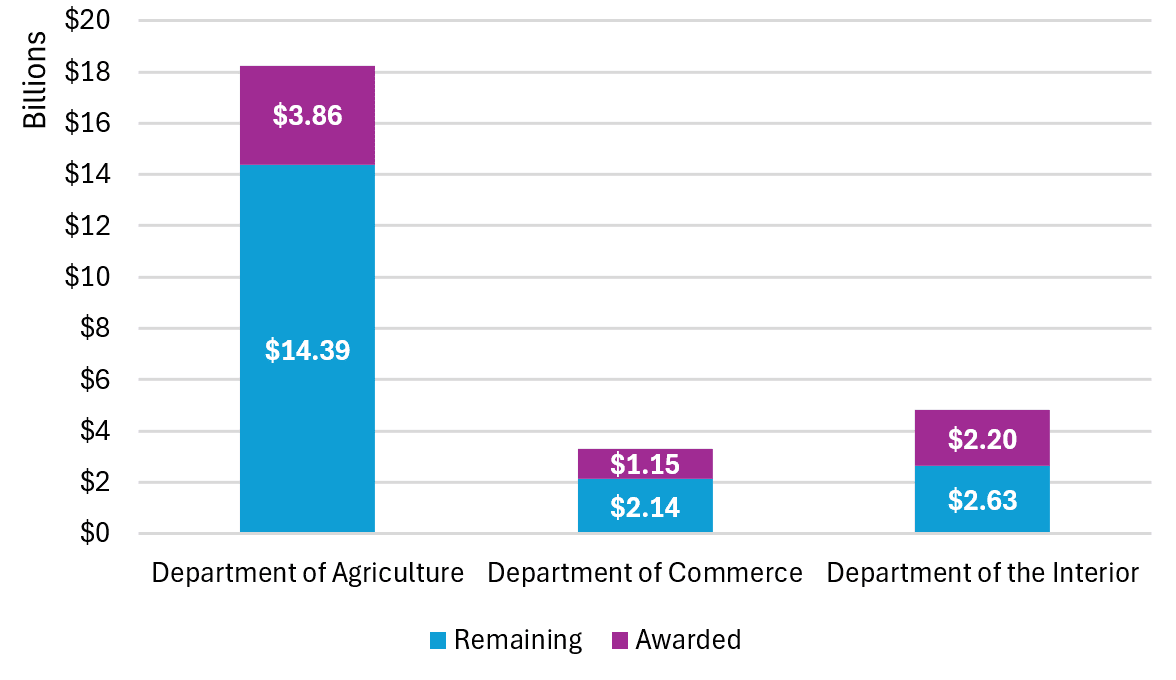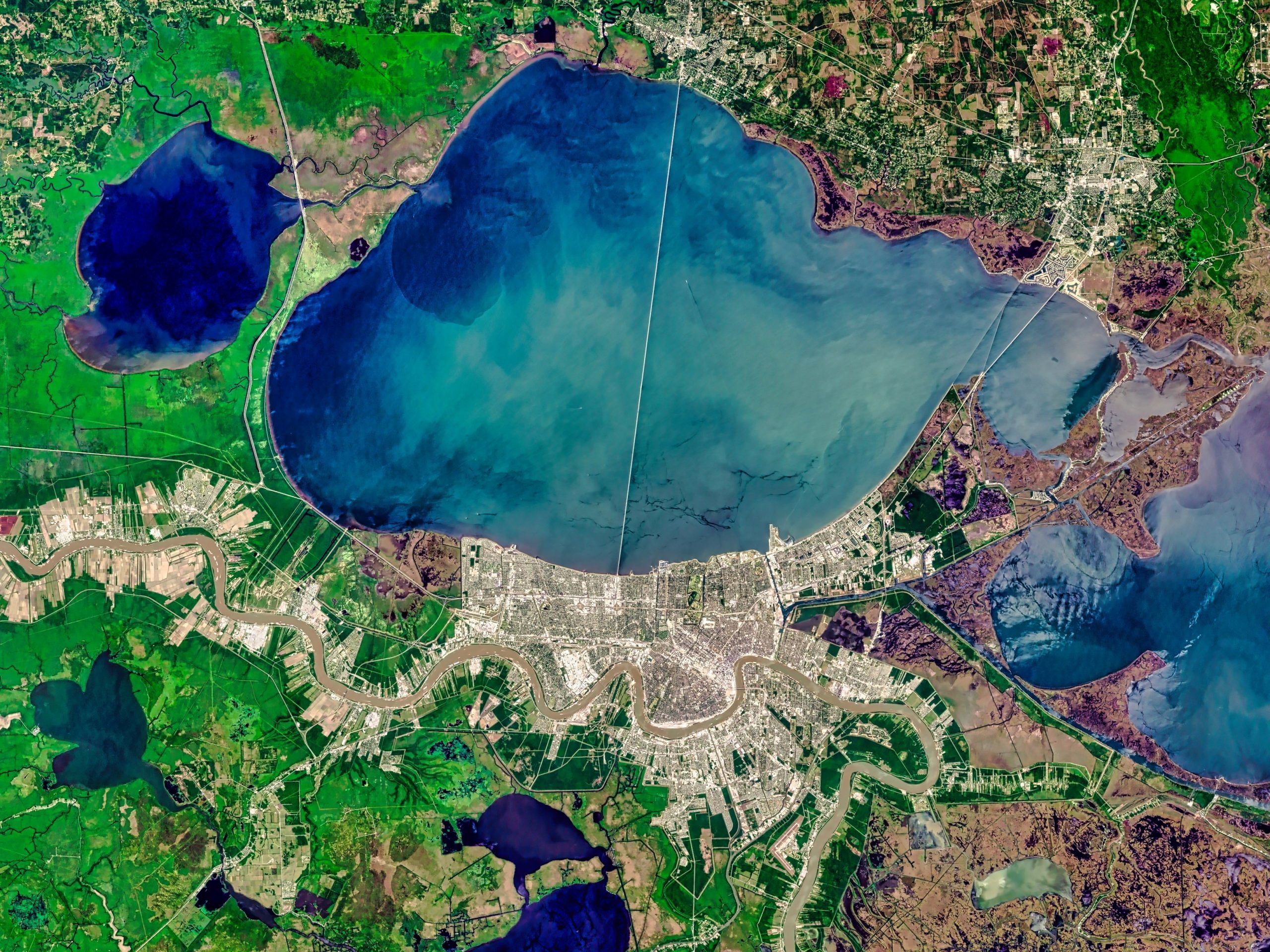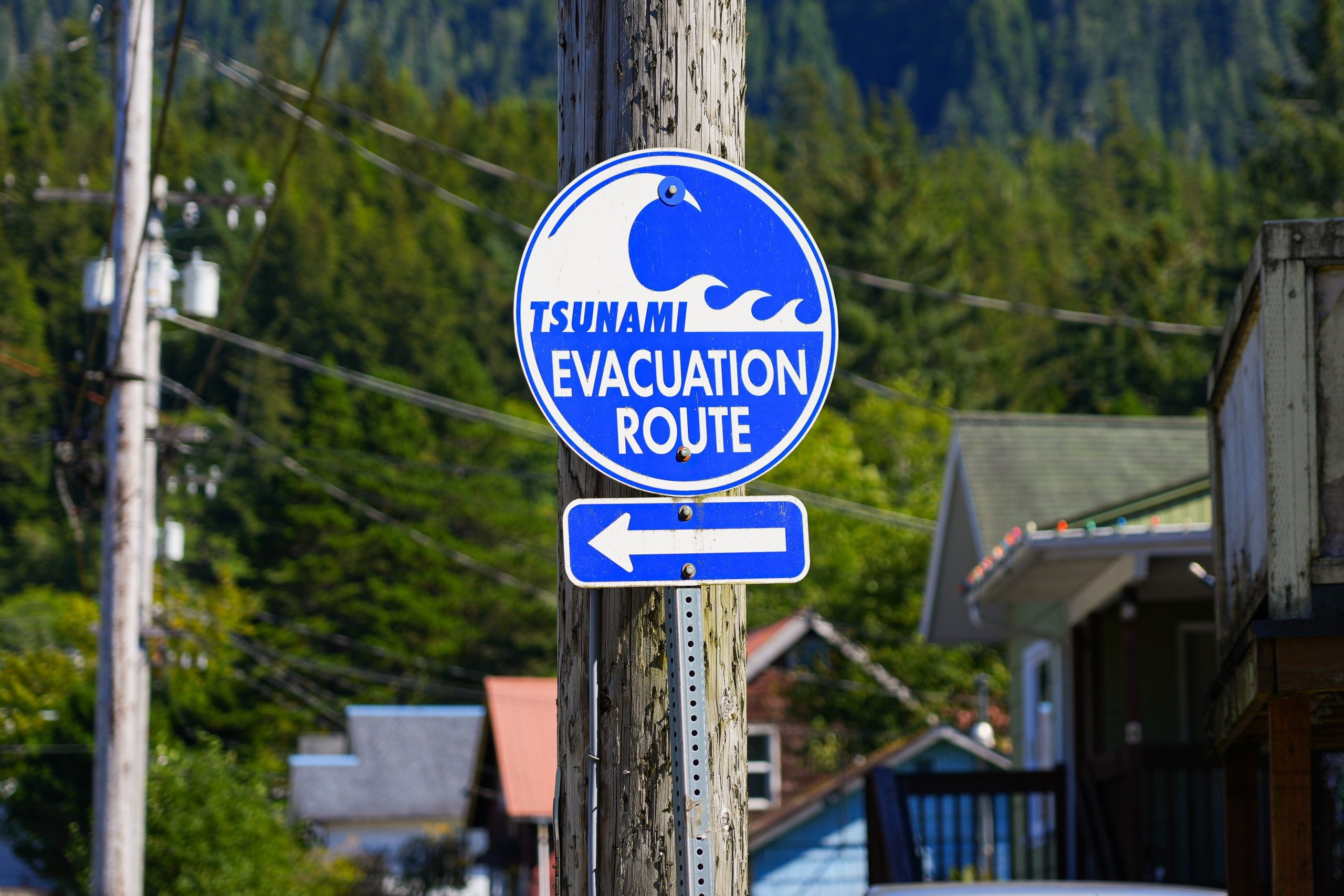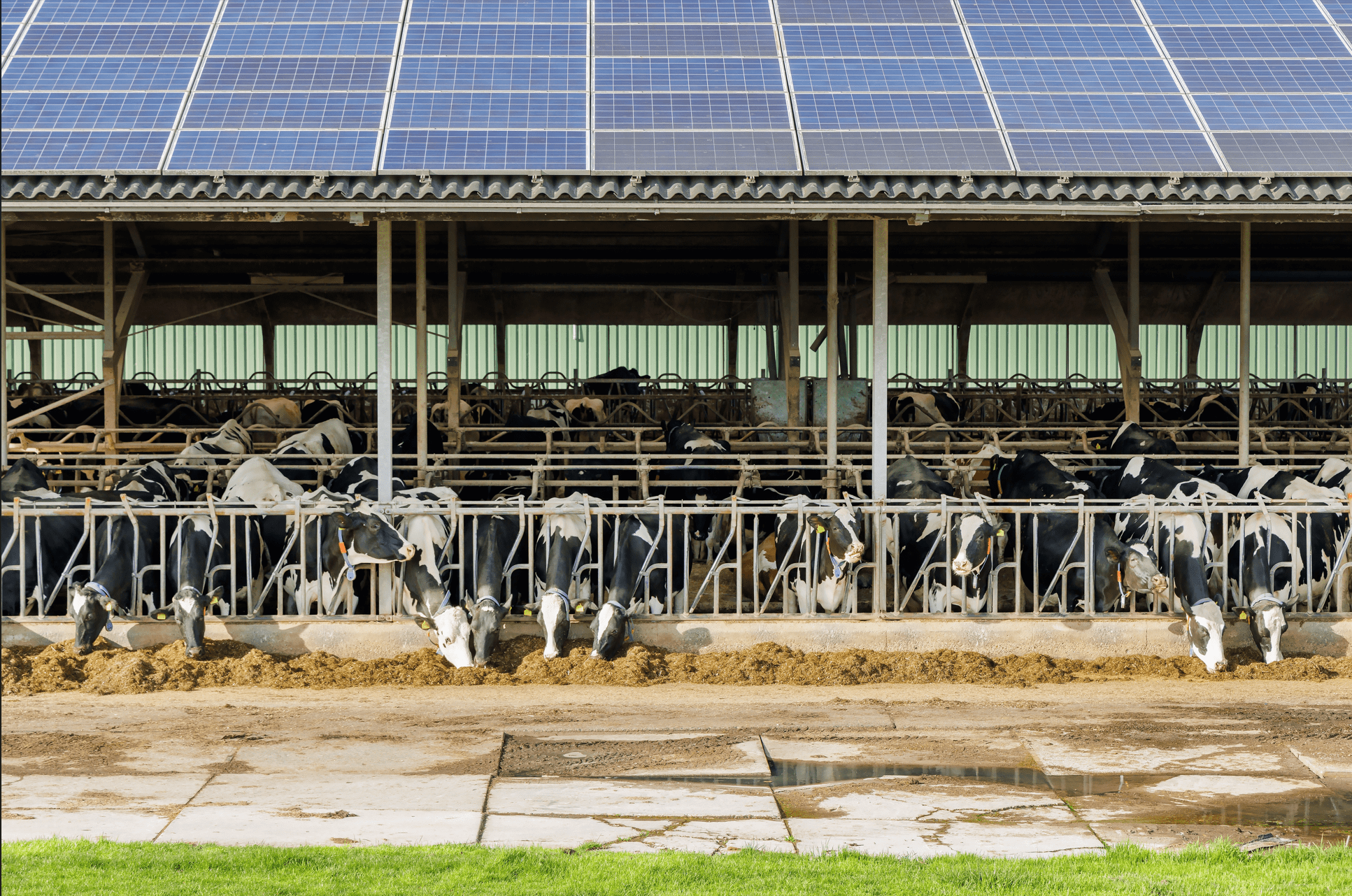
The Inflation Reduction Act (IRA) was signed into law on August 16, 2022. Now, two years into the first of its kind influx of federal funding into environmental efforts, what has its effect been on the water world?
All in all, the IRA contains $26.4 billion in federal funds for which water projects qualify for. Thus far, about $7.2 billion, just over a quarter, has been awarded (Figure 1). These billions span 16 programs, nine of which are part of the Biden-Harris Administration’s Justice40 initiative, according to the Water Program Portal’s Opportunities Dashboard. These programs are managed by three different federal agencies: the Department of the Interior (six), the Department of Commerce (five), and the Department of Agriculture (five).
Figure 1: IRA Funding for Water by Federal Agency

Source: Water Program Portal, Opportunities and Outcomes Dashboards.
Department of Interior (DOI) funding is focused on drought mitigation and Tribal climate resiliency. Of the six Department of the Interior (DOI) programs, four amounting to almost $4.6 billion are managed by the Bureau of Reclamation and two adding up to $235 million are under the Bureau of Indian Affairs’ purview. Three of the Reclamation programs are focused on expanding and improving the management of domestic water supplies, with the largest pot coming from the Drought Mitigation program ($4 billion). The program is focused on Western water supplies, specifically the Colorado River Basin, and other comparable basins facing long-term perennial drought. Over $1 billion has been awarded thus far.
The other three DOI programs support Tribal Nations, with the final Reclamation program providing emergency drought relief and the two Indian Affairs’ programs implementing climate resilience strategies. Over half of the Tribal Climate Resilience funding has been awarded, $130.8 million of $235 million. $10 million is dedicated to ameliorating Tribally owned fish hatcheries, while the rest pertains widely to hardening Tribal Nations’ cultural and natural resources.
All of the Department of Commerce programs are managed by the National Oceanic and Atmospheric Administration (NOAA) and support either climate resilience or research. NOAA’s five programs are funded at a total of $3.29 billion, $2.6 billion of which lies within the Investing in Coastal Communities and Climate Resilience. In the midst of one of the most extreme hurricane seasons in American history, these funds are meant to shore up protection, conservation, and restoration of coastal communities, particularly communities dependent on coastal or marine resources. Dispensed through FY2026, the program’s funding is siphoned through various channels: collaborative agreements, competitive grants, and direct federal spending via other existing programs, such as NOAA Fisheries’ Pacific Coastal Salmon Recovery Fund.
The remaining four NOAA programs are aimed at refining NOAA’s technological resources for weather forecasting and other research activities. $490 million is earmarked for direct federal spending directly into NOAA and its facilities and resources; the remaining $200 million is available competitively to fund various weather and climate research projects, with $133 million remaining in the program.
The bulk of Department of Agriculture funding, $18.05 billion, is managed in four programs by the Natural Resources Conservation Service (NRCS) and supports climate-smart agricultural programs (Figure 2). All four of these programs — the Agricultural Conservation Easement Program, the Conservation Stewardship Program, the Environmental Quality Investment Program, and the Regional Conservation Partnership Program — are generally solely funded by the Farm Bill. IRA, however, boosted the total funds available in these programs beginning in FY2023. These dollars support activities like irrigation and water efficiency; they can also support other climate-smart agricultural practices that improve soil quality or conserve surface water.
Figure 2: IRA Funding for Climate-Smart Agriculture and Conservation Programs

Source: Water Program Portal’s Opportunities Dashboard.
Thus far, just under $4 billion has been awarded between fiscal years 2023 and 2024. The amount of available funding for the program doubled between 2023 and 2024, and is projected to increase again in FY2025.
Congress is currently working through the Farm Bill’s renewal. Some of the ongoing debate circles around moving some of the remaining $14 billion in IRA’s funding for these four programs, or in other words taking away from the programs’ base funding and relying on the IRA funding to bridge the gap. Congress is also considering removing the climate-smart agriculture requirement from EQIP and RCPP. These developments are ongoing, and a previous Water Program Portal Spotlight Story describes key background.
Finally, while the Greenhouse Gas Reduction Fund is not directly featured on the Water Program Portal, some of its funding may be used for clean water infrastructure. The Coalition for Green Capital, PRE Collective, and Quantified Ventures’ recently awarded $1.3 million to six green banks, all of which are investing in “build[ing] a pipeline of equitable clean water infrastructure projects.” While green banks do not frequently fund water projects, there is growing interest in how they might help fill water infrastructure financing gaps, particularly in historically disadvantaged communities.
Overall, the IRA has produced dozens of awards funding thousands of projects for water projects nationwide. This funding will continue to be distributed over the next two fiscal years, sustaining water research, management, and resiliency investments.


